11 july 2019
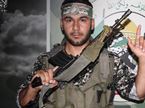
The IDF issues statement saying the troops stationed at the border mistakenly identified a 'restrain operative' along the security fence as an armed terrorist; Hamas threatened Israel with retaliation as a result of the shooting
The fatal shooting of a Hamas operative by Israeli troops along the Gaza border, appears to have been a result of a "misunderstanding," the military said in a statement Thursday.
IDF troops shot and killed a Palestinian near the border fence in the northern Gaza Strip earlier on Thursday, prompting Hamas - who claim the man killed was their operative - to threaten Israel with retaliation.
“Two Palestinians approached the area of the border fence earlier in the morning in the northern Gaza Strip, behind them was a Hamas restraint operative, who was supposed to take the men back to Gaza,” said the IDF Spokesperson’s Unit in a statement.
"An initial inquiry suggests that the IDF troops who arrived at the location misidentified the Hamas restraint operative to be an armed terrorist and fired as a result of this misunderstanding. The incident will be reviewed," it said.
"We will not allow this shooting to go without a response, and Israel will pay for its actions," the terror group said in a statement. "Israel intentionally fired at one of our members while he was carrying out his duties. We've launched an investigation into this crime."
The incident comes just as a senior Egyptian intelligence delegation was due to enter the Gaza Strip to discuss the agreement for calm with Israel, and also to restart reconciliation talks between Hamas and Fatah. These meetings were planned before today's shooting, but could now potentially be undermined by Hamas' response.
The Egyptian delegation will first meet with Palestinian Authority President Mahmoud Abbas and other senior Fatah officials in Ramallah, as well as possibly meeting with senior Israeli defense officials.
The killing of the gunman comes just as a temporary ceasefire agreement between the two sides has come into effect between Israel and Hamas, which was preceded by over 100 fires in southern Israel which broke out as a result of incendiary balloons launched from Gaza.
However, recent data from Israeli authorities show that the number of fires caused by incendiary balloons from Gaza have gone down in 2019, compared to 2018.
The fatal shooting of a Hamas operative by Israeli troops along the Gaza border, appears to have been a result of a "misunderstanding," the military said in a statement Thursday.
IDF troops shot and killed a Palestinian near the border fence in the northern Gaza Strip earlier on Thursday, prompting Hamas - who claim the man killed was their operative - to threaten Israel with retaliation.
“Two Palestinians approached the area of the border fence earlier in the morning in the northern Gaza Strip, behind them was a Hamas restraint operative, who was supposed to take the men back to Gaza,” said the IDF Spokesperson’s Unit in a statement.
"An initial inquiry suggests that the IDF troops who arrived at the location misidentified the Hamas restraint operative to be an armed terrorist and fired as a result of this misunderstanding. The incident will be reviewed," it said.
"We will not allow this shooting to go without a response, and Israel will pay for its actions," the terror group said in a statement. "Israel intentionally fired at one of our members while he was carrying out his duties. We've launched an investigation into this crime."
The incident comes just as a senior Egyptian intelligence delegation was due to enter the Gaza Strip to discuss the agreement for calm with Israel, and also to restart reconciliation talks between Hamas and Fatah. These meetings were planned before today's shooting, but could now potentially be undermined by Hamas' response.
The Egyptian delegation will first meet with Palestinian Authority President Mahmoud Abbas and other senior Fatah officials in Ramallah, as well as possibly meeting with senior Israeli defense officials.
The killing of the gunman comes just as a temporary ceasefire agreement between the two sides has come into effect between Israel and Hamas, which was preceded by over 100 fires in southern Israel which broke out as a result of incendiary balloons launched from Gaza.
However, recent data from Israeli authorities show that the number of fires caused by incendiary balloons from Gaza have gone down in 2019, compared to 2018.
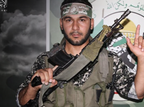
Mahmoud Ahmad al-Adham, 28
Israeli soldiers killed, Thursday, a young Palestinian man, east of Beit Hanoun, in the northern part of the Gaza Strip. The Palestinian was a member of Al-Qassam Brigades, the armed wing of Hamas, and was shot while trying to prevent protesters from approaching the perimeter fence.
The Palestinian Health Ministry has confirmed that the soldiers shot and seriously injured Mahmoud Ahmad al-Adham, 28, on Thursday morning, east of Beit Hanoun, and added that the young man succumbed to his injuries on Thursday evening.
He was one of many “Field Control” officers, stationed near the perimeter fence to prevent Palestinian protesters from approaching the perimeter fence with Israel as part of understandings to avoid escalation.
It is worth mentioning that the soldiers also fired several live rounds at filed control post, east of Rafah, in southern Gaza Strip.
The Al-Qassam Brigades issued a statement accusing Israel of deliberately killing the Palestinian, and said that “it is evaluating the situation, and its response to the grave Israeli violation.”
His death comes after a period of relative calm along the perimeter fence, especially after the indirect “ceasefire understandings” between Hamas and Israel, to avoid tension along the fence.
He was one of the dozens of officers, and fighters, tasked with preventing any Palestinian from reaching the perimeter fence or attempting to cross it.
As part of these understandings, Israel increased the fishing zone in the coastal region to fifteen nautical miles, a move that was described by Israeli officials as aiming at “preventing humanitarian deterioration,” in the already besieged and impoverished Gaza Strip.
Israeli soldiers killed, Thursday, a young Palestinian man, east of Beit Hanoun, in the northern part of the Gaza Strip. The Palestinian was a member of Al-Qassam Brigades, the armed wing of Hamas, and was shot while trying to prevent protesters from approaching the perimeter fence.
The Palestinian Health Ministry has confirmed that the soldiers shot and seriously injured Mahmoud Ahmad al-Adham, 28, on Thursday morning, east of Beit Hanoun, and added that the young man succumbed to his injuries on Thursday evening.
He was one of many “Field Control” officers, stationed near the perimeter fence to prevent Palestinian protesters from approaching the perimeter fence with Israel as part of understandings to avoid escalation.
It is worth mentioning that the soldiers also fired several live rounds at filed control post, east of Rafah, in southern Gaza Strip.
The Al-Qassam Brigades issued a statement accusing Israel of deliberately killing the Palestinian, and said that “it is evaluating the situation, and its response to the grave Israeli violation.”
His death comes after a period of relative calm along the perimeter fence, especially after the indirect “ceasefire understandings” between Hamas and Israel, to avoid tension along the fence.
He was one of the dozens of officers, and fighters, tasked with preventing any Palestinian from reaching the perimeter fence or attempting to cross it.
As part of these understandings, Israel increased the fishing zone in the coastal region to fifteen nautical miles, a move that was described by Israeli officials as aiming at “preventing humanitarian deterioration,” in the already besieged and impoverished Gaza Strip.
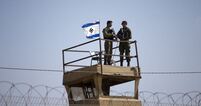
At least one Palestinian citizen on Thursday morning was injured when the Israeli occupation forces (IOF) opened fire at two observation posts belonging to the resistance in the north and south of the Gaza Strip.
According to local sources, one citizen suffered a bullet injury during an Israeli gunfire attack on an observation post in the east of Beit Hanoun, north of Gaza.
A similar attack happened on an observation post in the east of Rafah, south of Gaza. Luckily, no one was hurt.
The IOF also opened machinegun fire at agricultural lands in the east of al-Qarara town, south of Gaza, while the naval forces opened fire at Palestinian fishermen and their boasts off the northern coast of Gaza, with no reported casualties or material damage.
According to local sources, one citizen suffered a bullet injury during an Israeli gunfire attack on an observation post in the east of Beit Hanoun, north of Gaza.
A similar attack happened on an observation post in the east of Rafah, south of Gaza. Luckily, no one was hurt.
The IOF also opened machinegun fire at agricultural lands in the east of al-Qarara town, south of Gaza, while the naval forces opened fire at Palestinian fishermen and their boasts off the northern coast of Gaza, with no reported casualties or material damage.
10 july 2019
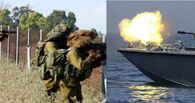
The Israeli occupation forces (IOF) on Wednesday morning opened fire at Palestinian fishermen and farmers in the Gaza Strip, and failed to arrest two Palestinians during their attempt to cross through the border fence.
According to the fishermen committees, Israeli gunboats opened machinegun fire at fishermen and their boats during their presence within four nautical miles off the northern coast of Gaza, with no reported casualties or material damage.
The IOF also opened fire at agricultural lands, farmers, shepherds and their homes in different border areas of Gaza, including the eastern areas of Khan Younis, Deir al-Balah and Gaza City.
Meanwhile, the Israeli army claimed its forces spotted two Palestinian young men as they were trying to cross into an Israeli border area in northern Gaza, but they managed to flee back to Gaza after soldiers rushed towards them.
According to the fishermen committees, Israeli gunboats opened machinegun fire at fishermen and their boats during their presence within four nautical miles off the northern coast of Gaza, with no reported casualties or material damage.
The IOF also opened fire at agricultural lands, farmers, shepherds and their homes in different border areas of Gaza, including the eastern areas of Khan Younis, Deir al-Balah and Gaza City.
Meanwhile, the Israeli army claimed its forces spotted two Palestinian young men as they were trying to cross into an Israeli border area in northern Gaza, but they managed to flee back to Gaza after soldiers rushed towards them.
9 july 2019

Rifqa Jamil 89
An 89-year old woman, identified as Rifqa Jamil, died Sunday of wounds sustained two months prior when Palestinian resistance fighters fired shells into her area. Jamil fell while running to a bomb shelter, and injured her back.
Since that time, Israeli medical sources report that her condition severely deteriorated, and she died on Sunday.
According to a statement from the hospital, “During her hospitalization at Barzilai Medical Center, other problems relating to her health arose which, as a result of her condition gradually deteriorated”.
Jamil was a resident of Ashkelon, a city on the coast of southern Israel which was once home to tens of thousands of Palestinian families who are now refugees in the walled-in Gaza Strip.
She was also the widow of an Israeli soldier, who was killed during the 1973 War against Palestinians and Arab states.
Her injury was sustained during the escalation two months ago, in which Israeli forces killed dozens of Palestinians through airstrikes and mortar shells, and Palestinian resistance fighters responded by firing shells into Israel, killing three Israeli civilians.
An 89-year old woman, identified as Rifqa Jamil, died Sunday of wounds sustained two months prior when Palestinian resistance fighters fired shells into her area. Jamil fell while running to a bomb shelter, and injured her back.
Since that time, Israeli medical sources report that her condition severely deteriorated, and she died on Sunday.
According to a statement from the hospital, “During her hospitalization at Barzilai Medical Center, other problems relating to her health arose which, as a result of her condition gradually deteriorated”.
Jamil was a resident of Ashkelon, a city on the coast of southern Israel which was once home to tens of thousands of Palestinian families who are now refugees in the walled-in Gaza Strip.
She was also the widow of an Israeli soldier, who was killed during the 1973 War against Palestinians and Arab states.
Her injury was sustained during the escalation two months ago, in which Israeli forces killed dozens of Palestinians through airstrikes and mortar shells, and Palestinian resistance fighters responded by firing shells into Israel, killing three Israeli civilians.
8 july 2019

On this day, five years ago, the Israeli occupation launched one of its deadliest military offensives against the Gaza Strip in recent history. The conflict left 2,251 people dead, with more than 11,000 wounded, according to Palestinian and UN sources.
Five years on, Gaza is still subject to intense attacks by Israel as well as the ongoing blockade which has been enforced for more than 11 years.
What: 2014 Israelis offensive against Gaza
When: 8 July – 26 August 2014
Where: The occupied Gaza Strip
What happened?
The Israeli military offensive on the Gaza Strip took place against the backdrop of a second Palestinian unity government being formed in early June by the Islamic Resistance Movement — Hamas — in the Gaza Strip and the Palestinian Authority in the West Bank. Threatened by the reconciliation between the two main Palestinian factions, Israeli Prime Minister Benjamin Netanyahu warned that the PA had to choose between peace with Hamas and peace with Israel.
Ten days later, on 12 June, three Israeli settlers went missing in the West Bank, an incident for which Israel blamed Hamas, despite providing no evidence to back the allegation. Netanyahu also stated that the kidnapping proved that the unity pact between the Palestinian factions could not be endorsed.
High ranking Hamas officials denied involvement and the PA attributed the abductions to the Qawasameh clan, a group within Hamas that has frequently acted against the party’s policies. Israeli historian Ilan Pappé has said that the motivation for the kidnapping was the murder of two Palestinian teenagers by Israeli forces in May 2014; the autopsy report which showed that the teens were killed by Israeli soldiers’ live fire had been made public the day before the kidnapping.
In the aftermath of the abduction, Israel launched a crackdown on alleged Hamas associates in the West Bank. Some 11 Palestinians were killed and dozens were wounded in the run up to 2 July, with hundreds arrested, many of whom had been freed in the Gilad Shalit prisoner exchange deal.
The murder of a Palestinian teen by Israeli settlers then sparked widespread protests in the occupied territories. Israel also bombarded the Gaza Strip, prompting some minor rocket fire from various factions in the besieged enclave.
After attempts to agree to a ceasefire failed, with Tel Aviv refusing to meet Hamas conditions that the siege be ended and prisoners released, on 7 July the Israeli military announced the start of Operative Protective Edge to “hit Hamas hard”.
Within the first 48 hours of the operation, Israel dropped 400 tonnes of bombs on Gaza. Over the next two months, some 6,000 air strikes were launched on the besieged 365 km2 of the coastal territory.
The subsequent bombardment displaced some 500,000 people; 300,000 civilians were forced to shelter in UNRWA schools. Electricity to hospitals was cut off, rendering thousands without basic medical care.
Hamas fired rockets towards Israel in response, but did little damage. Lacking in precision guidance systems, the attacks were indiscriminate by default, but Hamas has said on many occasions that its rockets are always intended to hit military targets. Conversely, Israel used its high-powered US-financed precision-guided arsenal to target civilian areas deliberately, claiming that militants were hiding in homes, schools and hospitals.
Israeli army also began a limited ground invasion, focusing on destroying tunnels used to transfer much-needed humanitarian supplies to the besieged population. The tunnels have been described as “Gaza’s lifeline”.
The offensive prompted outrage from the international community, with protests organised around the world in support of the Palestinians.
What happened next?
On 3 August, the army pulled most of its ground forces out of the Gaza Strip after completing the destruction of 32 tunnels. A week later, a three-day truce negotiated by Egypt came into effect, which led to a series of brief ceasefires, before Israel and Hamas agreed to an end to hostilities on 26 August.
The “Gaza War” has had enduring consequences for the Strip’s two million inhabitants. Over 2,250 Palestinians were killed, 500 of whom were children, and 11,000 were wounded, placing a huge strain on the already severely stretched medical sector.
Moreover, at least 20,000 buildings were destroyed in the Israeli bombardment, either reduced to rubble or rendered uninhabitable, including mosques, churches, hospitals and schools. Pierre Krähenbühl, the Commissioner-General of UNRWA, appealed for £178 million ($295 million) in international aid towards its recovery operations, but little of the planned reconstruction has been completed.
The Israeli death toll was 67 soldiers and six civilians by the time of the ceasefire.
The UN affirmed in 2015 that Israel committed war crimes during the offensive due to its targeting of civilians areas. Israel had refused to co-operate with the UN investigation, which it claimed had drawn its conclusions in advance. The report supported the Palestinians in the filing of a petition to the International Criminal Court (ICC), which has yet to open a full investigation into the allegations, despite dossiers of evidence reportedly having been provided by the PA.
A two-year investigation by Israel’s official watchdog into the operation also revealed last year that the government failed to explore diplomatic solutions to prevent the seven-week conflict. The 200-page report also criticized the Netanyahu government for ignoring several warnings by security services that the ongoing blockade in Gaza was escalating tensions and could lead to violence if not relaxed.
Five years down the line, Al Ray further reports, the Palestinians in Gaza continue to be subject to Israeli brutality, as demonstrated most recently during the Great March of Return protests since the end of March. At least 2017 people have been killed by Israeli forces, including children, medical personnel and journalists. A senior Israeli official tweeted: “Nothing was uncontrolled; everything was accurate and measured and we know where every bullet [fired by Israeli snipers] landed.” Campaigners believe that this alone is enough to see Israeli military personnel charged and convicted of war crimes.
Archive IMEMC posts:
09/02/14 VIDEO: Gaza City’s Devastated Al-Shuja’eyya Suburb
10/24/14 10 O’clock In Jerusalem & All Is Not Well
12/21/14 94 Israeli Ceasefire Violations Since August
Five years on, Gaza is still subject to intense attacks by Israel as well as the ongoing blockade which has been enforced for more than 11 years.
What: 2014 Israelis offensive against Gaza
When: 8 July – 26 August 2014
Where: The occupied Gaza Strip
What happened?
The Israeli military offensive on the Gaza Strip took place against the backdrop of a second Palestinian unity government being formed in early June by the Islamic Resistance Movement — Hamas — in the Gaza Strip and the Palestinian Authority in the West Bank. Threatened by the reconciliation between the two main Palestinian factions, Israeli Prime Minister Benjamin Netanyahu warned that the PA had to choose between peace with Hamas and peace with Israel.
Ten days later, on 12 June, three Israeli settlers went missing in the West Bank, an incident for which Israel blamed Hamas, despite providing no evidence to back the allegation. Netanyahu also stated that the kidnapping proved that the unity pact between the Palestinian factions could not be endorsed.
High ranking Hamas officials denied involvement and the PA attributed the abductions to the Qawasameh clan, a group within Hamas that has frequently acted against the party’s policies. Israeli historian Ilan Pappé has said that the motivation for the kidnapping was the murder of two Palestinian teenagers by Israeli forces in May 2014; the autopsy report which showed that the teens were killed by Israeli soldiers’ live fire had been made public the day before the kidnapping.
In the aftermath of the abduction, Israel launched a crackdown on alleged Hamas associates in the West Bank. Some 11 Palestinians were killed and dozens were wounded in the run up to 2 July, with hundreds arrested, many of whom had been freed in the Gilad Shalit prisoner exchange deal.
The murder of a Palestinian teen by Israeli settlers then sparked widespread protests in the occupied territories. Israel also bombarded the Gaza Strip, prompting some minor rocket fire from various factions in the besieged enclave.
After attempts to agree to a ceasefire failed, with Tel Aviv refusing to meet Hamas conditions that the siege be ended and prisoners released, on 7 July the Israeli military announced the start of Operative Protective Edge to “hit Hamas hard”.
Within the first 48 hours of the operation, Israel dropped 400 tonnes of bombs on Gaza. Over the next two months, some 6,000 air strikes were launched on the besieged 365 km2 of the coastal territory.
The subsequent bombardment displaced some 500,000 people; 300,000 civilians were forced to shelter in UNRWA schools. Electricity to hospitals was cut off, rendering thousands without basic medical care.
Hamas fired rockets towards Israel in response, but did little damage. Lacking in precision guidance systems, the attacks were indiscriminate by default, but Hamas has said on many occasions that its rockets are always intended to hit military targets. Conversely, Israel used its high-powered US-financed precision-guided arsenal to target civilian areas deliberately, claiming that militants were hiding in homes, schools and hospitals.
Israeli army also began a limited ground invasion, focusing on destroying tunnels used to transfer much-needed humanitarian supplies to the besieged population. The tunnels have been described as “Gaza’s lifeline”.
The offensive prompted outrage from the international community, with protests organised around the world in support of the Palestinians.
What happened next?
On 3 August, the army pulled most of its ground forces out of the Gaza Strip after completing the destruction of 32 tunnels. A week later, a three-day truce negotiated by Egypt came into effect, which led to a series of brief ceasefires, before Israel and Hamas agreed to an end to hostilities on 26 August.
The “Gaza War” has had enduring consequences for the Strip’s two million inhabitants. Over 2,250 Palestinians were killed, 500 of whom were children, and 11,000 were wounded, placing a huge strain on the already severely stretched medical sector.
Moreover, at least 20,000 buildings were destroyed in the Israeli bombardment, either reduced to rubble or rendered uninhabitable, including mosques, churches, hospitals and schools. Pierre Krähenbühl, the Commissioner-General of UNRWA, appealed for £178 million ($295 million) in international aid towards its recovery operations, but little of the planned reconstruction has been completed.
The Israeli death toll was 67 soldiers and six civilians by the time of the ceasefire.
The UN affirmed in 2015 that Israel committed war crimes during the offensive due to its targeting of civilians areas. Israel had refused to co-operate with the UN investigation, which it claimed had drawn its conclusions in advance. The report supported the Palestinians in the filing of a petition to the International Criminal Court (ICC), which has yet to open a full investigation into the allegations, despite dossiers of evidence reportedly having been provided by the PA.
A two-year investigation by Israel’s official watchdog into the operation also revealed last year that the government failed to explore diplomatic solutions to prevent the seven-week conflict. The 200-page report also criticized the Netanyahu government for ignoring several warnings by security services that the ongoing blockade in Gaza was escalating tensions and could lead to violence if not relaxed.
Five years down the line, Al Ray further reports, the Palestinians in Gaza continue to be subject to Israeli brutality, as demonstrated most recently during the Great March of Return protests since the end of March. At least 2017 people have been killed by Israeli forces, including children, medical personnel and journalists. A senior Israeli official tweeted: “Nothing was uncontrolled; everything was accurate and measured and we know where every bullet [fired by Israeli snipers] landed.” Campaigners believe that this alone is enough to see Israeli military personnel charged and convicted of war crimes.
Archive IMEMC posts:
09/02/14 VIDEO: Gaza City’s Devastated Al-Shuja’eyya Suburb
10/24/14 10 O’clock In Jerusalem & All Is Not Well
12/21/14 94 Israeli Ceasefire Violations Since August
7 july 2019
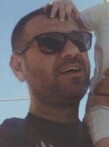
Chief of Staff Kochavi says mistakes were made that led to the force being compromised but rescuers excelled and lessons already leaned
IDF released preliminary findings from an investigation in a botched commando incursion into the Gaza Strip last year.
The Review examining a raid that resulted in the death of a Lt. Col. and another officer being injured, took place in November of 2018 in the area of Khan Yunis.
According to the findings, the officer's death was a result of friendly fire that took place after the commando unit was uncovered by Hamas militants.
Six Hamas fighters were also reported killed including the Khan Unis commander for the terror organization.
Abu Obaida, spokesperson Hamas military force Izzadin al-Qassam Brigades, said that the Israeli commandos infiltrated into Gaza in order to install equipment to wiretap Hamas’s communications networks.
IDF Chief of General Staff Lieutenant General Aviv Kochavi said the military's examination of the event showed there were mistakes made on the ground that led to the force being compromised.
The findings show rescue forces excelled in extracting the troops and are considered for special citations.
IDF Spokespersons Unit added that the lessons learned from the investigation are already being implemented and the division is currently developing a multi-year program based on these conclusions.
Israeli Prime Minister and Defense Minister Benjamin Netanyahu said of the findings Sunday: “the lessons will be learned and the recommendations will be implemented. I welcome the courage of the fighters and pilots who worked under very difficult conditions and the heroic rescue operation.”
IDF released preliminary findings from an investigation in a botched commando incursion into the Gaza Strip last year.
The Review examining a raid that resulted in the death of a Lt. Col. and another officer being injured, took place in November of 2018 in the area of Khan Yunis.
According to the findings, the officer's death was a result of friendly fire that took place after the commando unit was uncovered by Hamas militants.
Six Hamas fighters were also reported killed including the Khan Unis commander for the terror organization.
Abu Obaida, spokesperson Hamas military force Izzadin al-Qassam Brigades, said that the Israeli commandos infiltrated into Gaza in order to install equipment to wiretap Hamas’s communications networks.
IDF Chief of General Staff Lieutenant General Aviv Kochavi said the military's examination of the event showed there were mistakes made on the ground that led to the force being compromised.
The findings show rescue forces excelled in extracting the troops and are considered for special citations.
IDF Spokespersons Unit added that the lessons learned from the investigation are already being implemented and the division is currently developing a multi-year program based on these conclusions.
Israeli Prime Minister and Defense Minister Benjamin Netanyahu said of the findings Sunday: “the lessons will be learned and the recommendations will be implemented. I welcome the courage of the fighters and pilots who worked under very difficult conditions and the heroic rescue operation.”
Page: 28 - 27 - 26 - 25 - 24 - 23 - 22 - 21 - 20 - 19 - 18 - 17 - 16 - 15 - 14 - 13 - 12 - 11 - 10 - 9 - 8 - 7
Truce violations List of names Pictures of martyrs
Days: Aug: 26 - 25 - 24 - 23 - 22 - 21 - 20 - 19 - 18 - 17 - 16 - 15 - 14 - 13 - 12 - 11 - 10 - 9 - 8 - 7 - 6 - 5 - 4 - 3 - 2 - 1
July: 31 - 30 - 29 - 28 - 27 - 26 - 25 - 24 - 23 - 22 - 21 - 20 - 19 - 18 - 17 - 16 - 15 - 14 - 13 - 12 - 11 - 10 - 9 - 8
